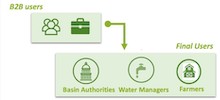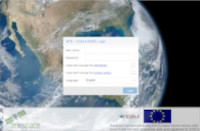- About us
- Project
- Publications
-
Deliverables

D6.4 – Promotional material
December 31, 2020DeliverablesThe aim of the communication materials is to publicise the COALA Project among potential users. This Deliverab...

D6.2: Communication and Disseminati...
December 31, 2020DeliverablesThis Deliverable is an update of the first version of the Communication and Dissemination Plan.

D4.1: Baseline Description of Pilot...
September 30, 2020DeliverablesThis Deliverable describes the pilot experiments of COALA Project. Participatory evaluation of the COALA servi...
- Media Room
-
News

COALA Project: A Success St...
August 20, 2023Blog, Evidenziato, News, Press ReleaseThe COALA Project, a European Union funded project involving a collaborative initiative between the European U...

Workshop on COALA business model
December 19, 2020News
Plenary meeting November 23, 24 and...
December 1, 2020NewsThe plenary meeting of COALA Project has been held on 23rd, 24th and 30 November 2020

Webinar: Governance of Water Scarci...
November 17, 2020NewsThanks to Copernicus data, Europe and Australia launch a new challenge to improve the management of water and ...
- Blog
- Resources
-
- February 1, 2022
- UNSW
- Blog
- No Comments
Earth Observation Road Map Part 2

Earth Observation Road Map Part 2
Our blog last week focused on the Australian Space Agency’s roadmap for Earth Observation (EO). We first discussed how Earth observation helps Australia’s economy (even in fields you wouldn’t expect). Then we talked about the priority areas that were identified by the Space Agency. This week we are summarising the five key areas that the Space agency wants to strengthen. These key areas support Australia’s priorities in sustainability, leadership in the sector, and place in the international Earth Observation community.
Australian Earth Observation missions and payloads
Australia wants to launch its own EO satellites by 2030. Achieving this goal will strengthen manufacturing abilities and government interaction on global markets and supply chains. It would also increase Australian visibility and leadership in satellite Earth Observation sector. Why do we need these Australian missions? several areas that have been highlighted as important given the unique Australian context (geographic and environmental) include Australian-based cross-calibration tools to help work with the other international satellites, national water quality monitoring (of key interest to members of our COALA community), national bushfire fuel load monitoring, meteorological data collection (done through satellites of the geostationary orbit), and observation of our maritime areas.
Data quality assurance and integrity monitoring
Australia’s geographic location, engagement with international relations and our infrastructure, is highly advantageous to coordinate networks of quality assurance. Further developing these capabilities will allow the Australian market to provide national and international expertise. Data quality assurance is necessary for different types of data (e.g., radar, hyperspectral) and applications (e.g., water quality and quantity monitoring, soil nutrients) and even in remote sensing to support further exploration of the moon. Developing Australia’s reputation in quality and integrity means that Australia will need to continue investing in developing artificial intelligence and computing, for instance. The end goal will be that an “Australian quality stamp” would be synonymous with EO data. And, importantly, that stamp would signify that the results and services that are accurate, reliable, and trusted.
Enhance data management
There are people in Australia using EO at many different levels of stakeholder interaction including, research, industry and government. The data is developed in lots of different ways to help support different end-users. The Australian Space Agency wants to develop innovation in the secure storage of these data. They also want to develop ‘analysis ready’ data management. Providing the data in an analysis-ready format will allow different stakeholders to quickly and easily get the information they need. This key area will foster trust in Australian EO services and capabilities.
Australia has both public and privately developed EO data systems that showcase our expertise in handling this kind of information. The ultimate goal of the Space Agency is for Australia to be a global leader in EO data management. They also want to quicken processing times to allow the faster transformation of data into services, systems and products that are applicable to growing EO markets.
International EO partnership and leadership
The Australian EO community has a variety of international partnerships (like COALA) that facilitate collaborative initiatives that support our unique data and information needs. The Australian government works with global EO networks, and many large-scale scientific organisations in Australia such as CSIRO and Geoscience Australia work closely with Europe and the USA respectively to cement Australia’s place as a community member and leader. The proposed roles will help drive national capabilities in designing missions, manufacturing and identifying opportunities in the international community. This in turn is related to the recent governmental focus on translational research and will allow for the transformation of technology from research-based to present and operational.
Access to international data and missions
Currently, there are lots of different ways that the EO community in Australia accesses the data from international missions including commercial data resellers, procuring data from commercial missions themselves, partnerships, international agreements, direct broadcasts and on an “ad-hoc” basis. The demand for EO data in Australia has been increasing steadily and the Space Agency wants to focus on ensuring continued and increased access to all, so that supply can keep up with demand. for this to happen, more work on ground segment technology (Earth-based stations which allow for management of data) is needed. This technology helps increase our access to international data providing both direct download and network access.
End of the roadmap
It is an aspiration of the Australian government to see the space sector increase to 30,000 jobs by 2030. The key areas we discussed above will help position Australia to evolve with a changing market and generate useful and cutting-edge remote sensing technologies, with the ultimate goal of increasing our human capital in this area and in tandem generating economic benefits to our nation.



















